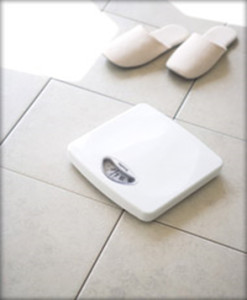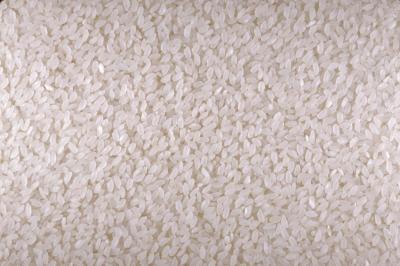Hydrangea:
A Symbol Flower of Rainy Season in Japan

Released on EurekAlert! On May 6, 2014
http://www.eurekalert.org/pub_releases/2014-05/ehs-sae050114.php
According to a new study in the Journal of Nutrition Education and Behavior
PHILADELPHIA, PA, May 6, 2014 – Weekly consumption of sports drinks and energy drinks among adolescents is significantly associated with higher consumption of other sugar-sweetened beverages, cigarette smoking, and screen media use, according to a study conducted by researchers from the University of Minnesota and Duke University.
The study was undertaken to build understanding of health behavior patterns related to adolescent consumption of sports and energy drinks and inform intervention strategies to reduce consumption of these sugar-sweetened beverages. Although national data have shown a decline in the prevalence of soft drink and fruit drink consumption, sports and energy drink consumption has tripled among adolescents in recent years. The high caffeine content of energy drinks, as well as the high sugar and calorie content of many sports and energy drinks, has drawn much concern from health professionals
Data for the study were gathered from 20 public middle schools and high schools in the Minneapolis-St. Paul metropolitan area of Minnesota as part of the population-based study, Eating and Activity in Teens (EAT 2010). Surveys and anthropometric measures were completed by 2,793 adolescents during the 2009–2010 school year. Mean age of the participants was 14.4 years, participants were equally divided by gender, and 81 percent identified as a racial/ethnic background other than non-Hispanic white.
Among the measured variables in this study were height and weight; consumption frequency for sports drinks, energy drinks, and breakfast; time spent engaged in physical activity, playing video games, and watching television; and smoking status. Although sports drink consumption was linked to higher levels of moderate-to-vigorous physical activity and sport participation, the overall pattern of associations indicated that sports and energy drink consumption should be addressed as part of a clustering of unhealthy behaviors among some adolescents.
Of note, “among boys, weekly sports drink consumption was significantly associated with higher TV viewing; boys who regularly consumed sports drinks spent about one additional hour per week watching TV compared with boys who consumed sports drinks less than once per week,” said lead author Nicole Larson, PhD, MPH, RDN, Division of Epidemiology and Community Health, School of Public Health, University of Minnesota, Minneapolis. As another example, “boys who consumed energy drinks at least weekly spent approximately four additional hours per week playing video games compared to those who consumed energy drinks less than once per week.”
The American Academy of Pediatrics recommends that sports drinks should be consumed by adolescents only after vigorous, prolonged activity, and that energy drinks should not be consumed because they offer no benefit and increase risks for overstimulation of the nervous system. Future research and interventions should target the clustering of related health risk behaviors and pursue more education to promote healthy hydration habits among youth.
Original Article released:
http://www.eurekalert.org/pub_releases/2014-05/ehs-sae050114.php
Link Cited on: LINK de DIET
http://www.nutritio.net/linkdediet/news/FMPro?-db=NEWS.fp5&-Format=detail.htm&kibanID=44712&-lay=lay&-Find
Last Updated Oct 21, 2013 by Kendra Crawford on LIVESTRONG.COM
http://www.livestrong.com/article/317043-health-benefit-of-eating-cucumbers/

Cucumbers are 96 percent water, but do have valuable nutrients.
Photo Credit Jupiterimages/Photos.com/Getty Images
Because cucumbers are mostly water, they are low in calories — even a large cucumber contains less than 100 calories — but they still come loaded with nutritional value. Eaten either fresh or as a pickle, cucumbers have numerous health benefits, even though they may not be full of flavor. Add them to salads or slice them in spears to eat alone or with a low-fat dip.
Cucumbers are believed to have originated in southern Asia and India more than 10,000 years ago. The many varieties of cucumbers are all part of the Cucurbitaceae family, along with watermelons, zucchini and squash, which are often considered fruits, based on how they are prepared or eaten. Currently, Florida produces more cucumbers than anywhere else in the United States, notes the U.S. Department of Agriculture.
Cucumbers are made up of 96 percent water, notes Organicfoods.com.au. Because more than half of the body is made up of water, it is essential for normal functioning of the different systems of the body. A lack of water can lead to dehydration, which can cause fatigue, chills and muscle cramps. Water is crucial for saliva formation and cooling the body through perspiration.
Cucumbers are loaded with vitamin C. This vitamin serves as one of the many antioxidants that protect the body from free radicals, lowering the risk of various cancers and illness due to damaged cells. Vitamin C has many important functions such as aiding in collagen production and brain function, and it also helps your body process fat.
Like vitamin A, vitamin K plays a role in building bone, as well as other tissues of the body. However, vitamin K is mainly responsible for making some of the proteins the liver requires for blood clotting. This coagulation ability is important for people who suffer from bleeding disorders, reducing their chances of bleeding out after a cut or injury. Approximately half of the cucumber’s vitamin K content is found in its peel, so keep the peel on for maximal health benefits.
A 100g serving, around 3.5oz, of cucumber contains around 150mg of potassium. This mineral aids in metabolic functions and also plays a role in the development of muscle tissue. Adequate potassium is also necessary for maintaining normal electrical activity of the heart, and a diet rich in potassium protects you from high blood pressure.
Original Article: LIVESTRONG.COM
http://www.livestrong.com/article/317043-health-benefit-of-eating-cucumbers/
Last Updated: Aug 16, 2013 | By David Friedman

The combination of lemon and sea salt is rich with antioxidants and electrolytes.
Photo Credit lemons image by Maria Brzostowska from
<a href=’http://www.fotolia.com’>Fotolia.com</a>
Sea salt and lemon are a powerful combination for a variety of reasons. They provide a significant dose of electrolytes, give bland foods a blast of flavor and provide antioxidants to keep you healthy. Many people search high and low to find foods that are both healthful and tasty; sea salt and lemon offer that combination of flavor and nutrients.
Some of us have a sweet tooth, some crave a salty taste and some like both. A salty, lemon-flavored snack can satisfy both of these cravings without simple sugars, which may cause blood glucose fluctuations that can lead to weight gain, diabetes and heart problems. Candies, cookies, pastries and soft drinks are full of calories and sugar with no nutrient value. By getting into the habit of combining sea salt and lemon with healthful foods, you can stanch the need for sugary foods.
Electrolytes are ionized salts that help your body retain water. A decrease in electrolytes may cause dehydration. Each time you urinate or sweat, you lose electrolytes, so they must be replenished on a regular basis. Most foods you consume contain enough electrolytes to keep you healthy. If you are physically active or you reside in a hot, dry climate, however, you may experience a faster loss of electrolytes. Both sea salt and lemons are great sources of electrolytes.
Lemons are chock-full of the antioxidant vitamin C. Antioxidants fight free radicals in the body, helping to prevent cancer and heart disease. Vitamin C also repairs damaged cells and decreases swelling due to arthritis. Vitamin C may also be an immune-system booster. Sea salt contains significant amounts of common essential minerals such as phosphorus, calcium, copper and potassium. When combined, lemon and sea salt can boost your overall health and well-being.
Original Article: LIVESTRONG.COM
http://www.livestrong.com/article/267770-benefits-of-sea-salt-lemon/
Released on EurekAlert! On May 28, 2014
http://www.eurekalert.org/pub_releases/2014-05/ifhm-noo052114.php
No country has successfully reduced obesity rates in 33 years
SEATTLE—Today, 2.1 billion people—nearly 30% of the world’s population—are either obese or overweight, according to a new, first-of-its kind analysis of trend data from 188 countries. The rise in global obesity rates over the last three decades has been substantial and widespread, presenting a major public health epidemic in both the developed and the developing world.
 The study, “Global, regional, and national prevalence of overweight and obesity in children and adults during 1980-2013: a systematic analysis for the Global Burden of Disease Study 2013,” conducted by the Institute for Health Metrics and Evaluation (IHME) at the University of Washington and published in The Lancet on May 29, found that the number of overweight and obese individuals globally increased from 857 million in 1980 to 2.1 billion in 2013. Overweight is defined as having a Body Mass Index (BMI), or weight-to-height ratio, greater than or equal to 25 and lower than 30, while obesity is defined as having a BMI equal to or greater than 30.
The study, “Global, regional, and national prevalence of overweight and obesity in children and adults during 1980-2013: a systematic analysis for the Global Burden of Disease Study 2013,” conducted by the Institute for Health Metrics and Evaluation (IHME) at the University of Washington and published in The Lancet on May 29, found that the number of overweight and obese individuals globally increased from 857 million in 1980 to 2.1 billion in 2013. Overweight is defined as having a Body Mass Index (BMI), or weight-to-height ratio, greater than or equal to 25 and lower than 30, while obesity is defined as having a BMI equal to or greater than 30.
Over the course of the study, rates of overweight and obesity among adults have increased for both men (from 29% to 37%) and women (from 30% to 38%). In developed countries, men had higher rates of overweight and obesity, while women in developing countries exhibited higher rates. Also in developed countries, the peak of obesity rates is moving to younger ages.
“Obesity is an issue affecting people of all ages and incomes, everywhere,” said Dr. Christopher Murray, director of IHME and a co-founder of the Global Burden of Disease (GBD) study. “In the last three decades, not one country has achieved success in reducing obesity rates, and we expect obesity to rise steadily as incomes rise in low- and middle-income countries in particular, unless urgent steps are taken to address this public health crisis.”
Looking at individual countries, the highest proportion of the world’s obese people (13%) live in the United States. China and India together represent 15% of the world’s obese population. Rates in the study were age-standardized, meaning they were adjusted for differences in population size and ages over time and across countries.
Among children and adolescents, obesity has increased substantially worldwide. Between 1980 and 2013, the prevalence of overweight or obese children and adolescents increased by nearly 50%. In 2013, more than 22% of girls and nearly 24% of boys living in developed countries were found to be overweight or obese. Rates are also on the rise among children and adolescents in the developing world, where nearly 13% of boys and more than 13% of girls are overweight or obese. Particularly high rates of child and adolescent obesity were seen in Middle Eastern and North African countries, notably among girls.
“The rise in obesity among children is especially troubling in so many low- and middle-income countries,” said Marie Ng, Assistant Professor of Global Health at IHME and the paper’s lead author. “We know that there are severe downstream health effects from childhood obesity, including cardiovascular disease, diabetes, and many cancers. We need to be thinking now about how to turn this trend around.”
Regionally, countries in the Middle East and North Africa, Central America, and Island nations in the Pacific and Caribbean have already reached exceptionally high rates of overweight and obesity—44% or higher. In 2013, the highest rates of overweight and obesity were seen in the Middle East and North Africa, where more than 58% of men and 65% of women age 20 or older were found to be either overweight or obese. More than two-thirds of the countries in the region had overweight and obesity rates of over 50% in adult men and women. In Central America, more than 57% of adult men and more than 65% of adult women were overweight or obese, with the highest prevalence—greater than 50% among men and women—found in Colombia, Costa Rica, and Mexico. In the Pacific Islands, nearly 44% of men and more than 51% of women are overweight or obese, as are nearly 38% of men and more than 50% of women in the Caribbean.
While the percentage of people who are either overweight or obese has risen substantially over the last 30 years, there have been marked variations across regions and countries. In developed countries, increases in obesity that began in the 1980s and accelerated from 1992 to 2002 have slowed since 2006. Conversely, in developing countries, where almost two-thirds of the world’s obese people currently live, increases are likely to continue.
Key findings:
# # #
The Institute for Health Metrics and Evaluation (IHME) is an independent global health research organization at the University of Washington that provides rigorous and comparable measurement of the world’s most important health problems and evaluates the strategies used to address them. IHME makes this information widely available so that policymakers have the evidence they need to make informed decisions about how to allocate resources to best improve population health.
Original Article released:
http://www.eurekalert.org/pub_releases/2014-05/ifhm-noo052114.php
Link Cited on: LINK de DIET
http://www.nutritio.net/linkdediet/news/FMPro?-db=NEWS.fp5&-Format=detail.htm&kibanID=44752&-lay=lay&-Find
Posted on Women’s Health on January 29, 2014
http://www.womenshealthmag.com/fitness/good-posture
Slouchy looks good on bags and boots… on you, not so much. Here’s why bad posture can derail your fitness goals—plus, head-to-toe fixesu’re after.
 Wavebreak Media/Thinkstock
Wavebreak Media/Thinkstock
Slumping your shoulders doesn’t just make you resemble one of our long-extinct ancestors—if you don’t stand up straight, no amount of exercise will give you the hot bod you’re after. Here’s why: Over time, poor posture takes a serious toll on your spine, shoulders, hips, and knees. In fact, it can cause a cascade of structural flaws that lead to back and joint pain, reduced flexibility, and compromised muscles, all of which limit your ability to burn fat and build strength. But you can head off all these problems by taking the simple self-test to the right, then using the exercises below to fix your form, soothe your pain, and get your curves moving in the right direction.
1. FORWARD HEAD
The problem: Stiff muscles in the back of your neck
The fix: Moving only your head, drop your chin down and in toward your sternum while stretching the back of your neck. Hold for a count of five; do this 10 times a day
2. ROUNDED SHOULDERS
The problem: Weakness in the middle and lower parts of your trapezius (the large muscle that spans your shoulders and back)
The fix: Lie facedown on the floor, with each arm at a 90-degree angle in the high-five position. Without changing your elbow angle, raise both arms by pulling your shoulders back and squeezing your shoulder blades together. Hold for five seconds. That’s one rep; do two or three sets of 12 reps daily.
3. ANTERIOR PELVIC TILT
The problem: Tight hip flexors
The fix: Kneel on your left knee, with your right foot on the floor in front of you, knee bent. Press forward until you feel the stretch in your left hip. Tighten your butt muscles on your left side until you feel the front of your hip stretching comfortably. Reach upward with your left arm and stretch to the right side. Hold for a count of 30 seconds. That’s one repetition; do three on each side.
4. ELEVATED SHOULDER
The problem: The muscle under your chest (running from your ribs to your shoulder blades) is weak.
The fix: Sit upright in a chair with your hands next to your hips, palms down on the seat, arms straight. Without moving your arms, push down on the chair until your hips lift up off the seat and your torso rises. Hold for five seconds. That’s one repetition; do two or three sets of 12 reps daily.
5 .PIGEON TOES
The problem: Weak glutes (butt muscles)
The fix : Lie on one side with your knees bent 90 degrees and your heels together. Keeping your hips still, raise your top knee upward, separating your knees like a clamshell. Pause for five seconds, then lower your knee to the starting position. That’s one rep. Perform two or three sets of 12 reps on each side daily.
6. DUCK FEET
The problem: Your oblique muscles and hip flexors are weak.
The fix: Get into a pushup position with your feet resting on a stability ball. Without rounding your lower back, tuck your knees under your torso, using your feet to roll the ball toward your body, then back to the starting position. That’s one rep. Do two or three sets of six to 12 reps daily.
Original Article released:
http://www.womenshealthmag.com/fitness/good-posture
Posted on LIVESTRONG.COM Last Updated: Oct 21, 2013 | By Shelley Moore
http://www.livestrong.com/article/338616-the-advantages-of-good-posture/
Posture is the position you maintain while standing, sitting or lying down. You have good posture when your position creates the least amount of strain on supporting muscles and ligaments when you move or perform weight-bearing activity. As we’re often reminded as kids, maintaining good posture is beneficial in many ways.

Good Posture Defined
Good sitting posture means that your back is straight and your buttocks are at the back of your chair. Keep your feet flat on the floor and bend your knees at a right angle. When standing with good posture, you should be able to draw an imaginary straight line from your earlobe through your shoulder, hip, knee and the middle of your ankle.
Better for Your Body
Good posture and back support are essential for avoiding back and neck pain. In fact, many people who suffer back pain experience positive changes when they improve their posture, notes the Cleveland Clinic. Good posture also prevents muscle aches and muscle fatigue. It keeps your bones and joints in proper alignment so you use your muscles more efficiently, preventing strain and overuse.
Future Health
Maintaining good posture may help you avoid new health problems. Proper posture reduces abnormal wear and tear on joint surfaces, which can lead to arthritis. It also reduces stress on ligaments that connect spinal joints. Good posture helps you avoid developing an abnormal permanent position, which can cause spinal disk problems and constricted blood vessels and nerves. Good posture also protects spinal joints from injury and deformity.
Breathe Right
Good posture helps to open the airways and ensure proper breathing. Proper breathing allows enhanced oxygen flow in the cardiopulmonary system. The blood then carries sufficient oxygen to the nervous system, organs and other tissues, so they function effectively.
Looking Good
Maintaining good posture does wonders for your appearance. Proper posture can help you make a good first impression, and appear more attractive and confident. When you avoid slouching, you look taller and slimmer. All these aspects add to your self-confidence.
Original Article released:
http://www.livestrong.com/article/338616-the-advantages-of-good-posture/
Released on EurekAlert! On May 8, 2014
http://www.eurekalert.org/pub_releases/2014-05/bmj-fa3050614.php
 Lack of exercise trumps other known risk factors, including overweight
Lack of exercise trumps other known risk factors, including overweight
From the age of 30 onwards, physical inactivity exerts a greater impact on a woman’s lifetime risk of developing heart disease than the other well-known risk factors, suggests research published online in the British Journal of Sports Medicine.
This includes overweight, the finding show, prompting the researchers to suggest that greater effort needs to be made to promote exercise.
The researchers wanted to quantify the changing contribution made to a woman’s likelihood of developing heart disease across her lifetime for each of the known top four risk factors in Australia: excess weight (high BMI); smoking; high blood pressure; and physical inactivity.
Together, these four risk factors account for over half the global prevalence of heart disease, which remains the leading cause of death in high income countries.
The researchers looked at the population attributable risk (PAR)—a mathematical formula used to define the proportion of disease in a defined population that would disappear if exposure to a specific risk factor were to be eliminated.
They based their calculations on estimates of the prevalence of the four risk factors among 32,154 participants in the Australian Longitudinal Study on Women’s Health, which has been tracking the long term health of women born in 1921-6, 1946-51, and 1973-8, since 1996.
They found that the prevalence of smoking fell from 28% in women age 22-27 to 5% in 73-78 year olds. But the prevalence of inactivity and high blood pressure increased steadily across the lifespan from age 22 to 90. Overweight increased from age 22 to 64, then declined in older age.
The researchers also used estimates of relative risk from the Global Burden of Disease study and applied them to the Australian women. Relative risk data indicate the likelihood that a woman with a particular risk factor will develop heart disease compared with someone without that risk factor.
Combining the prevalence and relative risk data, the researchers found that up to the age of 30, smoking was the most important contributor to heart disease, with a PAR of 59%. But from age 30 until the late 80s, low physical activity levels were responsible for higher levels of population risk than any of the other risk factors.
The researchers estimate that if every woman between the ages of 30 and 90 were able to reach the recommended weekly exercise quota—150 minutes of at least moderate intensity physical activity— then the lives of more than 2000 middle aged and older women could be saved each year in Australia alone.
The authors conclude that the contribution of different risk factors to the likelihood of developing heart disease changes across the lifespan.
Continuing efforts to curb smoking among the young are warranted, they say. But much more emphasis should be placed on physical inactivity, which, they claim, has been dwarfed by the current focus on overweight and obesity.
“Our data suggest that national programmes for the promotion and maintenance of physical activity, across the adult lifespan, but especially in young adulthood, deserve to be a much higher public health priority for women than they are now,” they conclude.
# # #
[Comparing population attributable risks for heart disease across the adult lifespan in women Online First doi 10.1136/bjsports-2013-093090]
Original Article released:
http://www.eurekalert.org/pub_releases/2014-05/bmj-fa3050614.php
Link Cited on: LINK de DIET
http://www.nutritio.net/linkdediet/news/FMPro?-db=NEWS.fp5&-Format=detail.htm&kibanID=44431&-lay=lay&-Find
by Suzanne Robin posted on LIVESTRONG.COM on May 21, 2012
http://www.livestrong.com/article/557273-the-health-benefits-of-amazake/

Like sake, amazaka is made from rice, but it isn’t alcoholic.
Photo Credit Jupiterimages/Photos.com/Getty Images
Combining rice and the aspergillus oryzae fungus produces several traditional Japanese products, including the alcoholic drink sake. Amazake, a nonalcoholic Japanese drink made from this pairing, is another Japanese dietary staple. Amazake is used to make puddings, pie fillings and other sweets as well as the drink. Commercially made amazaki tends to have a sweeter flavor than the homemade version, since it often contains added sugar. The health benefits depend on the type of rice used and the sugars added.
Digestion
Amazake is produced by combining cooked rice with koji, a fermented product made by mixing rice with aspergillus oryzae and incubating at a warm temperature for several hours. Fermented foods like amazake might benefit your stomach if you don’t digest food well. The enzymes in amazake help break down fats, complex carbohydrates and proteins for your body to use.
Effect on Toxins
Rice fermented with aspergillus oryzae might help your body eliminate toxins such as polyvinyl chloride, according to a Japanese study published in the October 2004 “Chemosphere.” The study compared blood levels of PVCs and other toxins in Japanese women who consumed the mixture with those who did not over a two-year period. Women who consumed the mixture eliminated more of the toxins than those who did not. This was a very small study of just nine women, but it did show a possible benefit of the mixture.
Vitamins and Minerals
Amazake produced from brown rice supplies more vitamins and minerals than amazake made from white rice. Brown rice retains the bran and germ of the rice, which contains B-complex vitamins niacin and thiamine, vitamin E and fiber. Brown rice also serves as a good source of iron, zinc, potassium, calcium, manganese and magnesium.
Sugar Variations
The amazake you buy in the store varies considerably from the version made at home. Commercial versions often substitute laboratory-produced enzymes for koji. While these enzymes, like koji, cause fermentation, manufacturers often choose specific enzymes designed to produce a sweeter product. If you’re trying to restrict your carbohydrate intake, commercially produced amazake might contain too much sugar. With homemade amazake, you can control the sweetness by adjusting the amount of koji added; the more koji, the sweeter the taste. Amazake contains about 50 percent simple sugars and 50 percent complex carbohydrates, so it provides quick but long-lasting energy, author John Belleme explains in “Japanese Foods That Heal.”
Original Article: LIVESTRONG.COM
http://www.livestrong.com/article/557273-the-health-benefits-of-amazake/